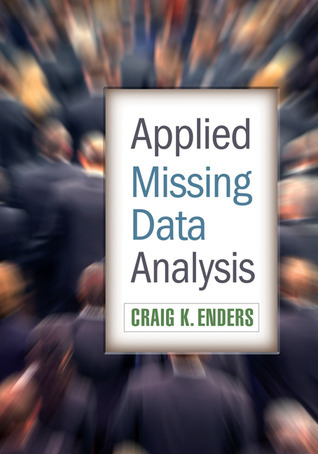What do you think?
Rate this book


Walking readers step by step through complex concepts, this book translates missing data techniques into something that applied researchers and graduate students can understand and utilize in their own research. Enders explains the rationale and procedural details for maximum likelihood estimation, Bayesian estimation, multiple imputation, and models for handling missing not at random (MNAR) data. Easy-to-follow examples and small simulated data sets illustrate the techniques and clarify the underlying principles. The companion website (www.appliedmissingdata.com) includes data files and syntax for the examples in the book as well as up-to-date information on software. The book is accessible to substantive researchers while providing a level of detail that will satisfy quantitative specialists.
382 pages, Hardcover
First published April 23, 2010